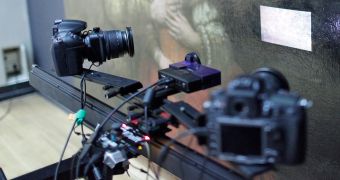I've already seen attempts at using 3D printers to reproduce rare art pieces, and have even written about a way that Fujifilm developed for 3D scanning them.
It's still impossible to actually reproduce complex things, and it will stay impossible for so long as precision is found wanting.
That plastic is the only material that can be used for such purposes doesn't help.
3D scanning is easier though, which is why Canon's Oce Group decided to come up with a method. Fujifilm has some competition.
Working with the Kroller-Muller and Rijksmuseum museums in the Netherlands, Dutch researcher Tim Zaman invented a photographic scanning system that can record all 3D details, so you don't just get a picture of the painting.
Brush strokes, the painting texture, tiny imperfections, everything is stored on a 3D model. Presumably, with the right materials, a high-resolution 600 ppi 3D printer would be able to remove the need for an artist to, say, paint a copy of a Rembrandt or Van Gogh for a second museum.

 14 DAY TRIAL //
14 DAY TRIAL //